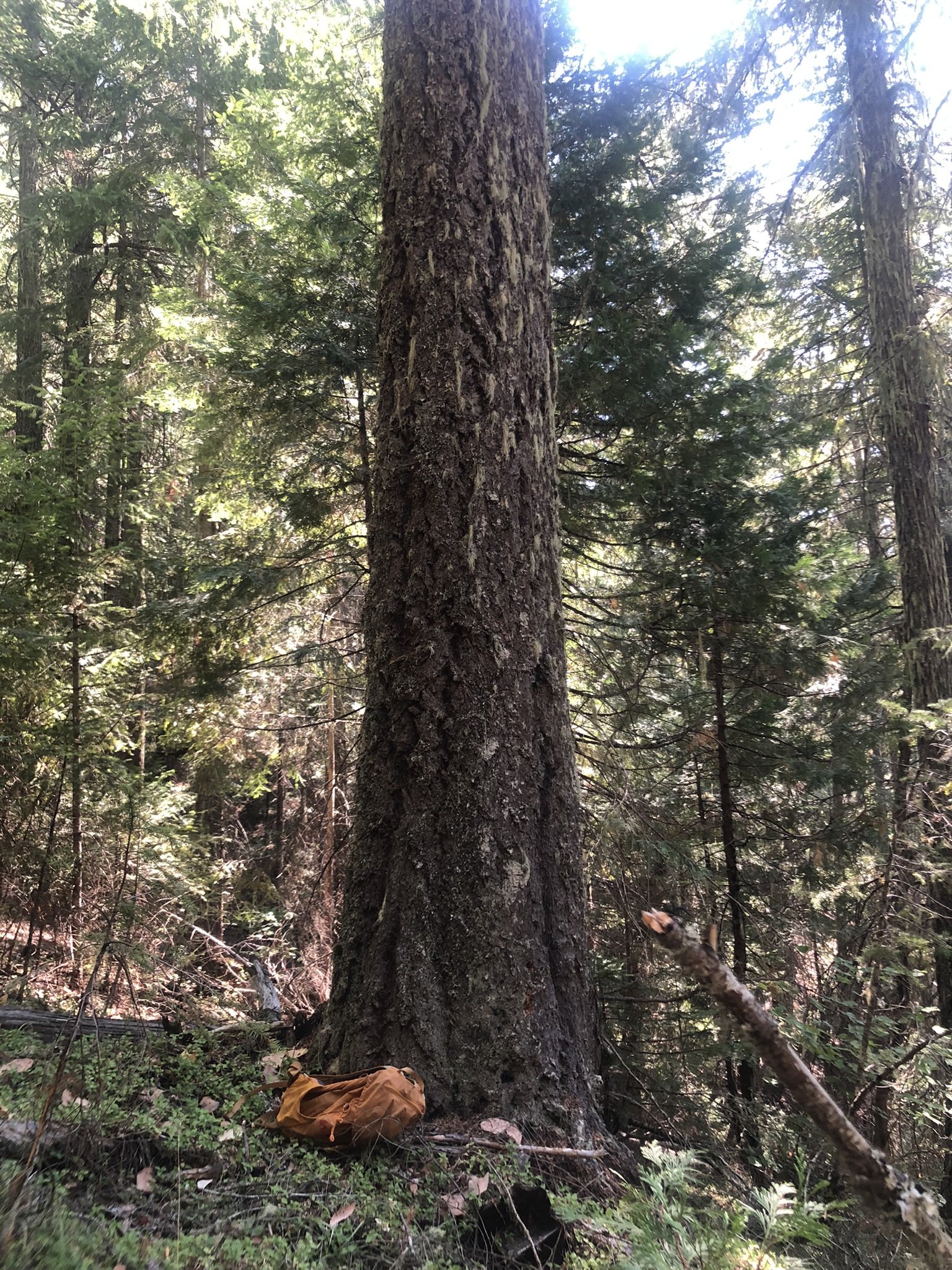Update on the Poor Windy Old-Growth Timber Sale
Written by Alexi Lovechio on August 15th, 2023
Updated on May 4th, 2024
Northern spotted owl. Photo: Kameron Perensovich
Last October, federal district court judge Ann Aiken ruled that the Bureau of Land Management (BLM) and the US Fish and Wildlife Service had illegally authorized harm to spotted owls and the old-growth habitat upon which they rely in the Poor Windy Timber Sale.
The Medford District BLM Poor Windy Timber Sale allows logging on more than 15,000 acres, including cutting down 4,573 acres of mature and old-growth trees. Old forests will be replaced by more ecologically and carbon impoverished tree plantations grown as a timber crop.
Tree targeted for logging in the Salmon Run unit within the Poor Windy timber sale.
Photo: Alexi Lovechio
The forests in the Poor Windy project are in a critically important region for wildlife and store massive amounts of carbon. Located in the foothills of the Cascades, these forests form a habitat bridge between the Klamath Mountains, the Oregon Coast Range and the Cascade Mountain Range. Surrounded by industrial clearcuts, these BLM forests provide the only habitat in the area for numerous mature and old growth forest-dependent species. Along the Interstate 5 corridor, public forests also offer many opportunities for recreation including hiking, camping, fishing and nature viewing and are critical for water quality.
Recently, the BLM has completed a new draft Biological Assessment that forms the basis for a yet another Biological Opinion by the USFWS. These documents are designed to put the forests in the Poor Windy Timber Sale back on the chopping block. The BLM intends to auction off the long-delayed Salmon Run timber sale out of Poor Windy in August of 2023.
KS Wild is paying close attention to this sale and will continue to advocate for the protection of these old-growth forests and the species that depend on them. The Poor Windy Timber Sale is in direct defiance of President Biden's Executive Order to protect mature and old-growth forests on public lands.
MAY 2024 UPDATE:
The BLM has dropped a logging spur road designed to be built in the path of numerous old-growth ponderosa pines following direct action pressure by tree sitters in the unit. You can read more about the tree sitters and their success here.


